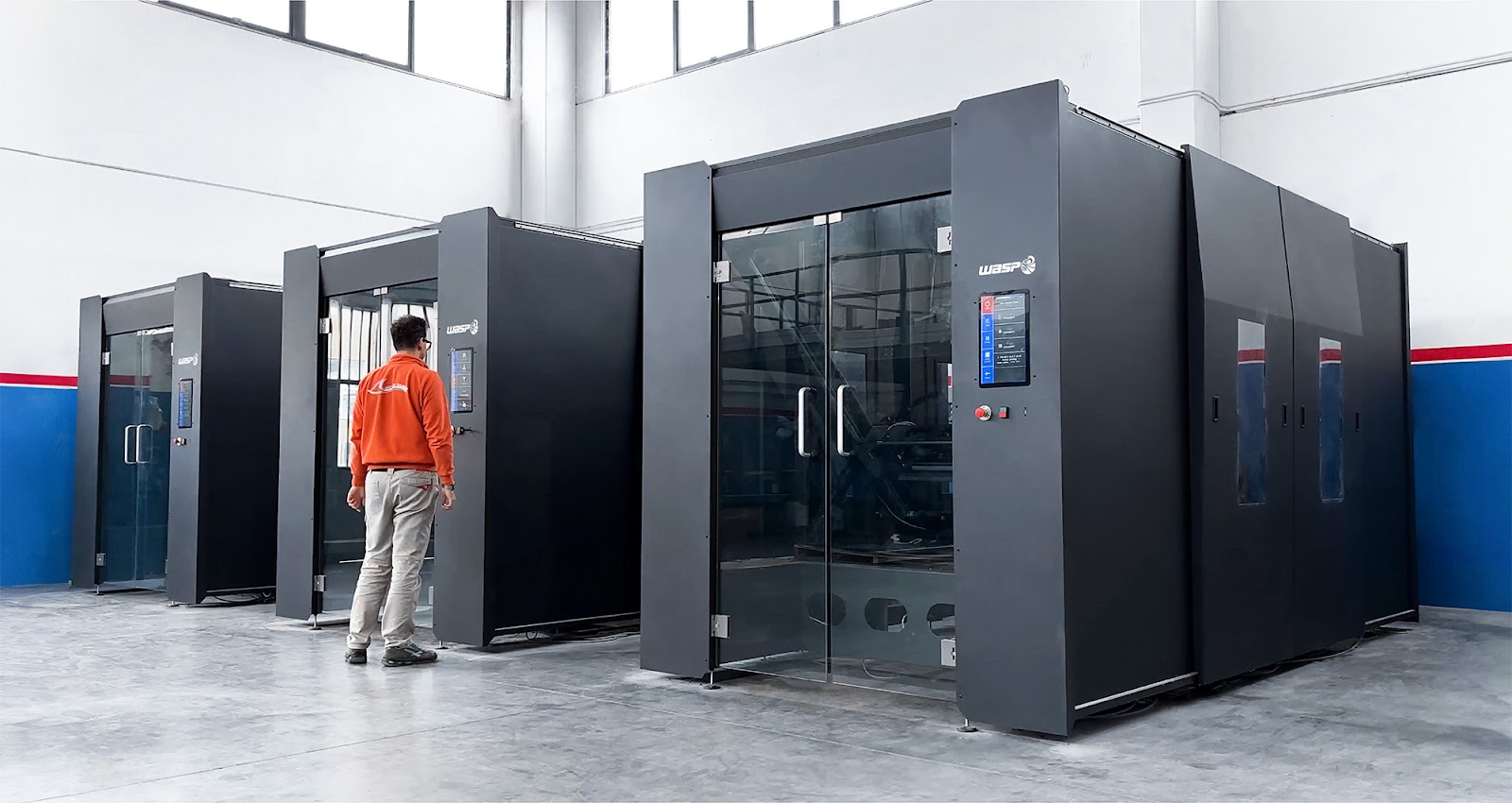Sustainability continues to be a buzzword in 3D printing, manufacturing, and the wider world, but how close are we to turning eco-friendly ideas into reality?
It’s well-established that subtractive manufacturing technologies – those that see products extracted from solid material – are more wasteful than additive ones which ‘build’ them, often layer-by-layer. Equally, it’s generally accepted that the 3D printing industry is fostering the innovation of greener materials, recycling processes, and on-site production opportunities.
However, these sustainability gains now feature prominently in the marketing of most additive manufacturing firms, and some work more directly towards net-zero than others. The AMGTA and 6K Additive, for example, have become champions of sustainability and material recycling – there are also 3D printer manufacturers like WASP, who actively try to disrupt industries.
Over the last 12 years, WASP has gradually shifted focus to developing the technologies required to make 3D printing sustainable bio-feedstocks competitive in construction. To-date, these efforts have seen the company create some incredibly unique structures, from a ‘TECLA’ eco-habitat in Italy, to a Dior concept store filled with fashion goods in Dubai.
Now, it appears that WASP is taking sustainable 3D printing to the next level. At this year’s Formnext trade show, the firm exhibited a series of heavier duty, automated, solutions with greater industrial potential than ever before. WASP’s Alessandro Severi gave me a full tour of the company’s booth and the following lowdown on its latest technologies.

Striving for sustainability at WASP
To a certain extent, WASP’s 3D printing journey has been all about scaling to new heights. It began with the PowerWASP: a fast, economical system capable of milling wood or aluminum and 3D printing using clay. From there, it launched more flexible ceramic-compatible Delta WASP machines, before introducing the BigDELTA and CraneWASP for construction.
With the latter, a 3D printer promoted as having an ‘infinite’ capacity, you’d think that WASP couldn’t scale any further, but you’d be wrong. At Formnext, the firm rolled out an XXL extruder described as a ‘technical modification’ that unlocks the true potential of pellet 3D printing.
According to Severi, the XXL printhead allows the technology to “reach even larger dimensions,” and expand into furniture 3D printing. The device can even be fitted to robotic arms – WASP has worked with specialist CEREBRO to create a workflow that sees users install its extruders, then 3D print eco-friendly materials into robust parts for R&D and industrial use cases.
“Effectively, we’ve introduced a ‘station’ that companies can install and use directly inside facilities to create products,” said Severi. “It’s compatible with all our extruders, so it works with different materials, from ceramic to plastics. Robotic arms are also a big thing in industry and now it’s possible to use more than one of our extruders via a single central system.”

Scaling to take on new challenges
One of WASP’s other major Formnext launches saw the introduction of the Power WASP 45 HDP. Too big to physically move into the exhibition hall, the massive 1100 x 2000 x 500 mm build volume machine is designed to print huge complex structures without any supports.
“Our largest-scale pellet 3D printer yet, the 45 HDP prints at an angle of 45 degrees, and this makes it possible to create very technical pieces,” explained Severi. “It allows you to create many different parts, including those with single-piece structures and multiple holes, that wouldn’t traditionally be possible without using support material.”
Interestingly, WASP’s latest machine is already attracting demand from outside its traditional market base, in the nautical sector. Not only has the company worked with Politecnico Milano to create a custom hull design, it has received interest from an Italian yacht manufacturer.
On the company’s booth, there was evidence of this initiative, in the shape of molds used to create interior furnishings like a hatch, drawer, and dashboard for Ferretti Yachts. Despite their intricate shapes, each of these parts were said to feature excellent mechanical strength, while their high level of surface finish made them ideal for creating luxury components.

Staying true to sustainable principles
One of WASP’s other additions to its product lineup, the RIGENERA system, adds further to the 45 HDP’s sustainability credentials. Not only does the firm’s new large-format machine save on support material, it’s compatible with RIGENERA recycled 3D printing pellets.
Severi described this process as perfect for “shortening the distance between materials and machines,” by shredding used feedstock into immediately reusable pellets. At the booth, these combined technologies seemed very much like a step towards achieving WASP’s wider aim of ‘3D printing to save the world,’ only one pellet at a time.
Alongside the colorful, muti-color 3D prints featured at its booth, made using its METAMORFOSI printhead, the company’s recycler also made it clear that it was sticking to what it does best. Yes, WASP is adventuring into new verticals. But unlocking new possibilities in the field of sustainable manufacturing remains at the very heart of its business.






